Zoom has taken the world by storm. People love using Zoom for official video calls because of its easy to use interface and amazing features. However, not everyone is aware of all the features offered and might consider using a simple app like Google Duo on Zoom. Well, no need to rush. We'll share some useful Zoom video settings to help you catch up on video calls in no time.
Contents1. Access video settingsMethod 1:Open video settings before a meetingMethod 2:Launch video settings from a meeting2. Test camera view3. Change camera4. Add Snapchat filters to Zoom5 meeting. Touch up appearance6. Change video aspect ratio7. Rotate the camera8. Add virtual background to Zoom9 meetings. Disable video in a meeting10. Disable video when joining a meeting11. Change view12. Hide yourself13. Disable participant videoMake the best use of it
Zoom's daily active user count has jumped from 10 million to 200 million due to the unfortunate COVID-19 pandemic. Although people can work from home, going through each setting for optimal use of the Zoom app can be time consuming.
Let's see some useful video tips to use in Zoom meetings on a Windows or Mac PC.
We will have to tinker with Zoom's video settings several times while working alongside this post. So, you need to know how to open it. There are two ways to open Zoom's video settings.
Step 1: Launch the Zoom app on your PC. Next, click the settings icon at the top.
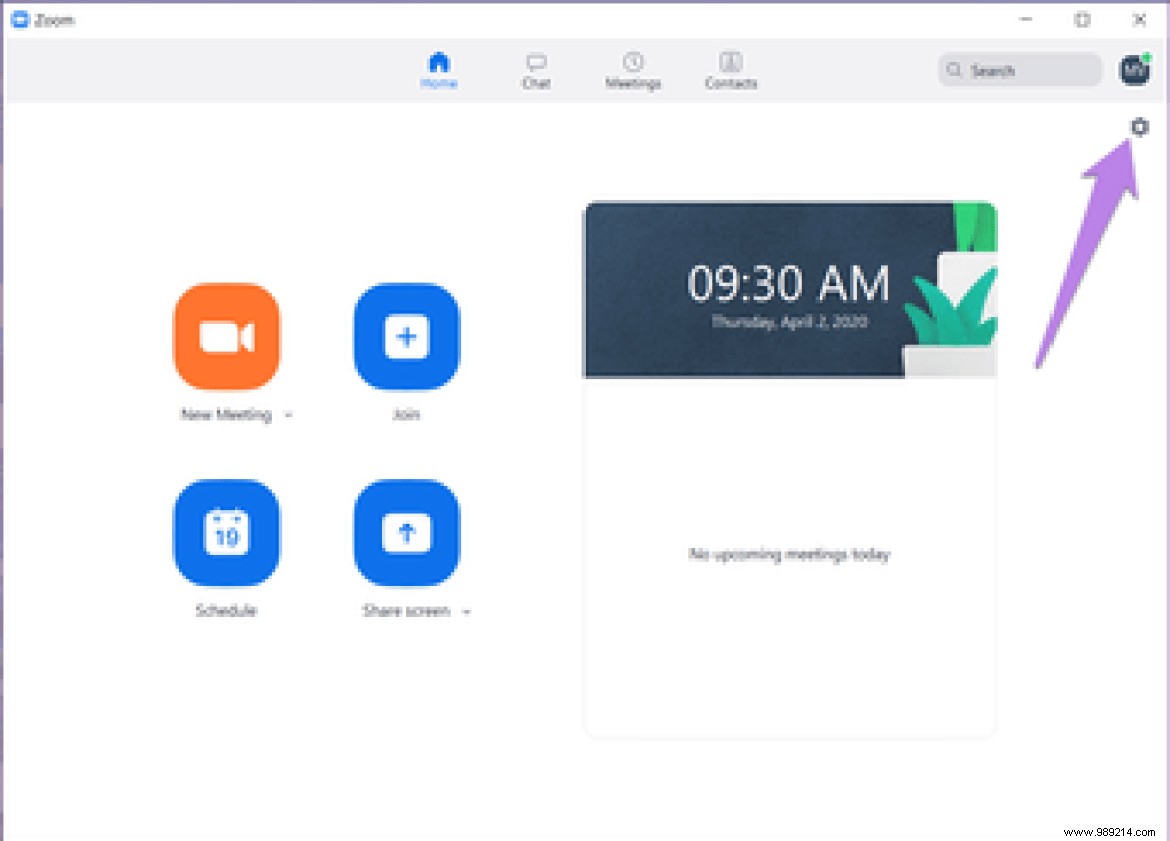
Step 2 :Click on the Video tab in the left sidebar.
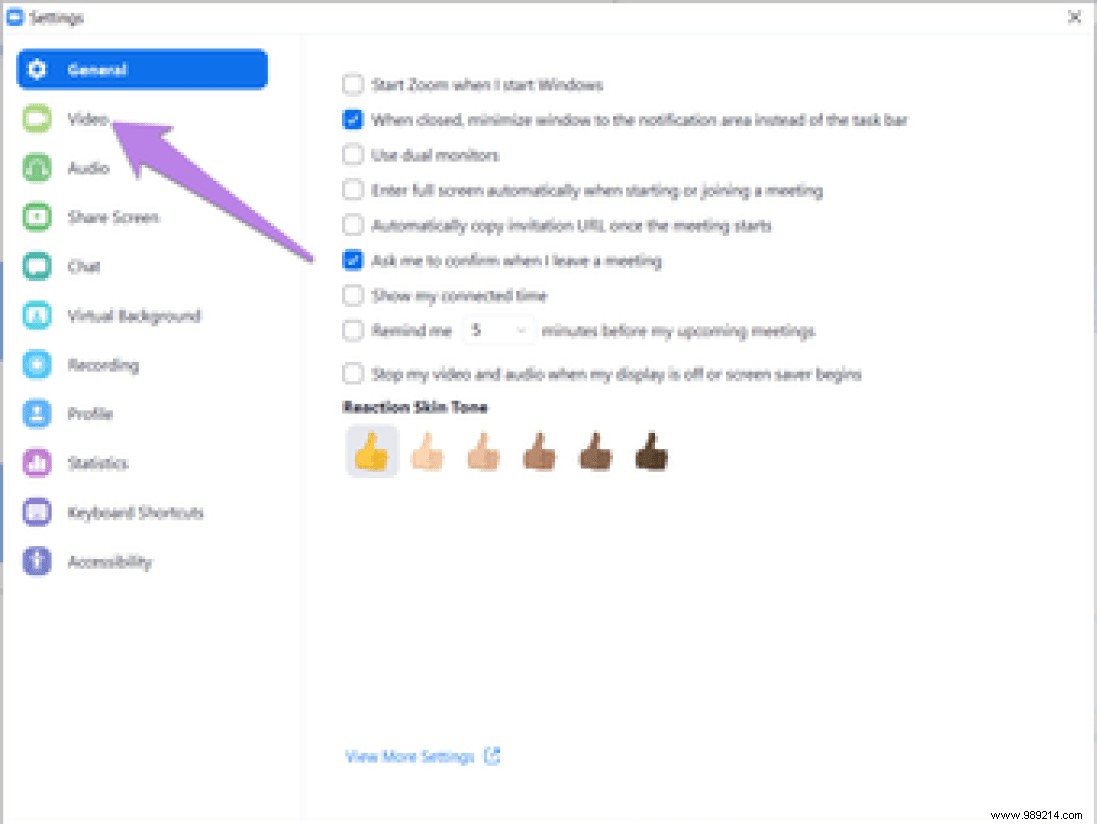
For this, click on the small up arrow next to the Video option present at the bottom. Select Video Settings from it.
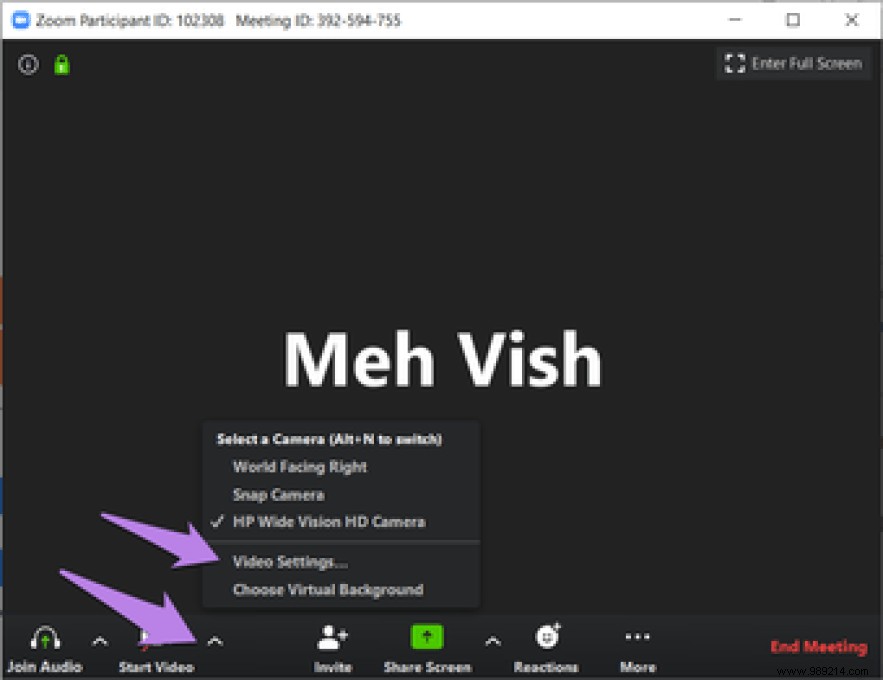
If you don't know what your video will look like or what the background looks like, you can try Zoom's video preview feature. To do this, open the video settings in Zoom, as shown above. In the Video tab, you will see the live preview of your video.
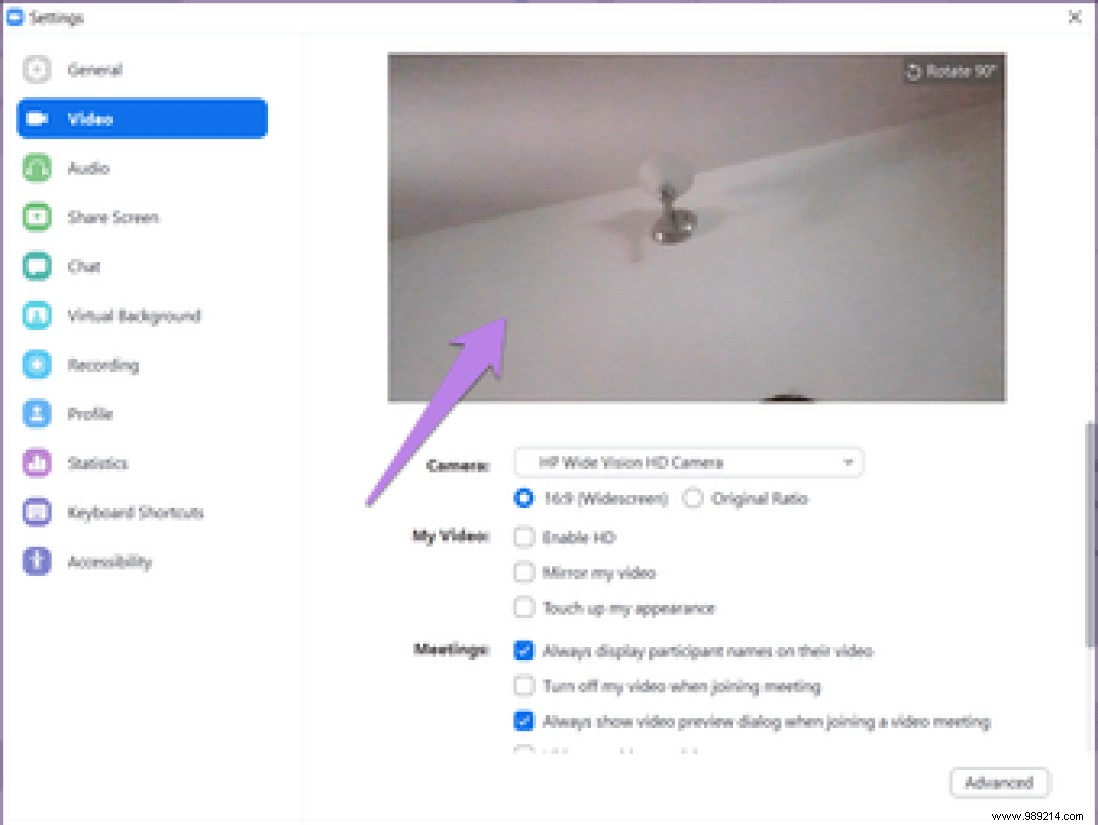
If your laptop supports dual camera or you are using an external camera, you can set one of them as the default camera in the Zoom app. Sometimes, when the video is not working in the Zoom app, the correct camera is not set by default, and that is why you are facing an issue. This setting will also help you solve this problem.
To change cameras in Zoom, open the video settings. Next, click on the drop-down list next to the Camera option. Select the camera from the list.
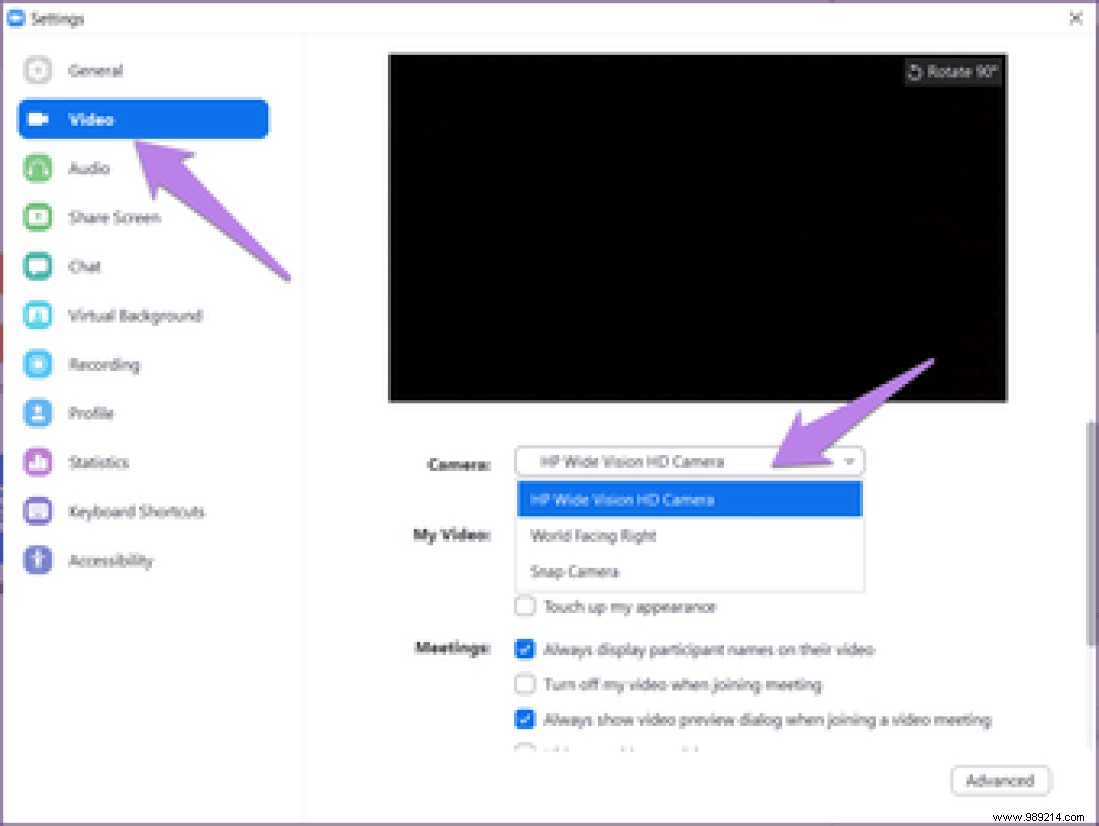
Alternatively, if you are in a meeting, click on the arrow present next to Video. Then select the camera from the menu to quickly change it.
Pro Tip: Use the shortcut Alt + N (Windows) and Command (⌘) + Shift + N (Mac) to switch between cameras.
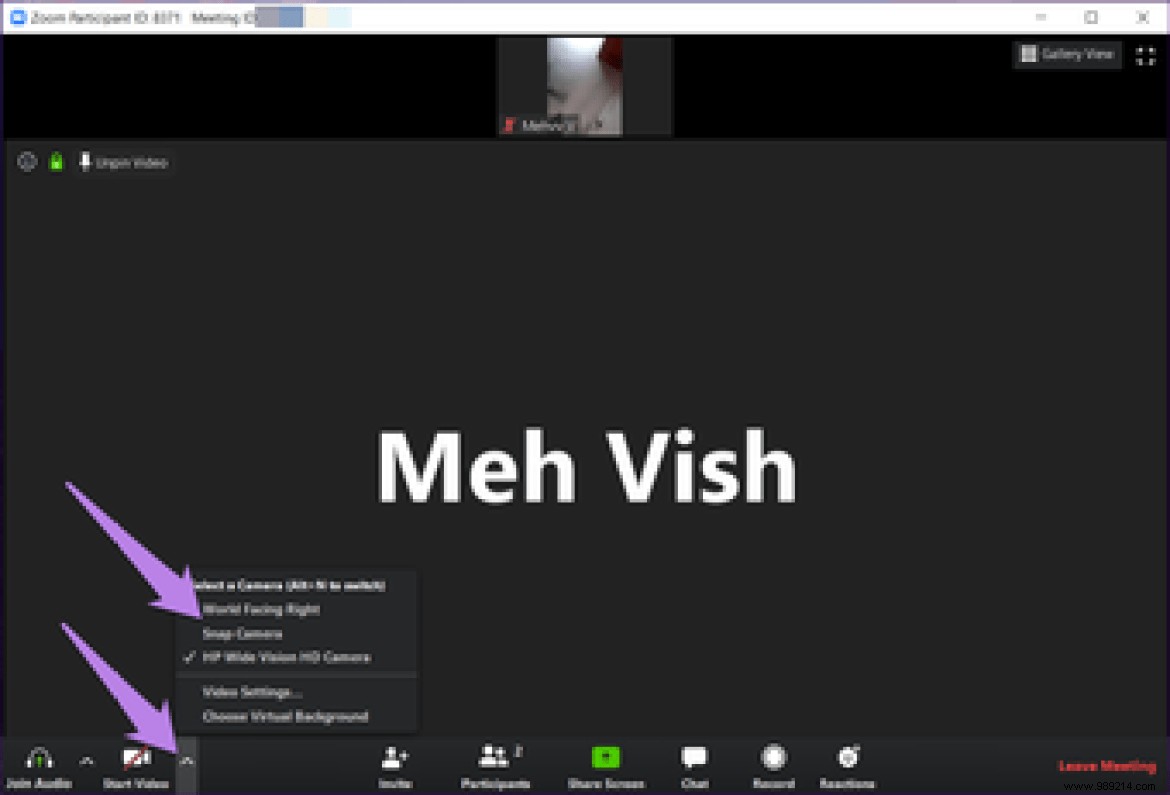
Meetings can get boring sometimes. To brighten them up, you can add Snapchat filters to your videos. This is possible with the help of Snap Camera app. For this you will need to install the Snap Camera app and then change the default camera in Zoom as shown above. We have covered the steps in detail. Check out our article on using Snapchat filters in Zoom meetings.
If the Snapchat filters seem way too extreme, but you still want to add an effect to your video, you should try the native editing feature in Zoom. To use it in your video, launch the video settings in Zoom. Next, check the box next to Touch up my appearance.

By default, Zoom displays videos in 16:9 format, i.e. in widescreen mode. You can edit it and view the video in the original report captured by your camera.

To do this, go to Video Settings. Select Original Report under Camera.
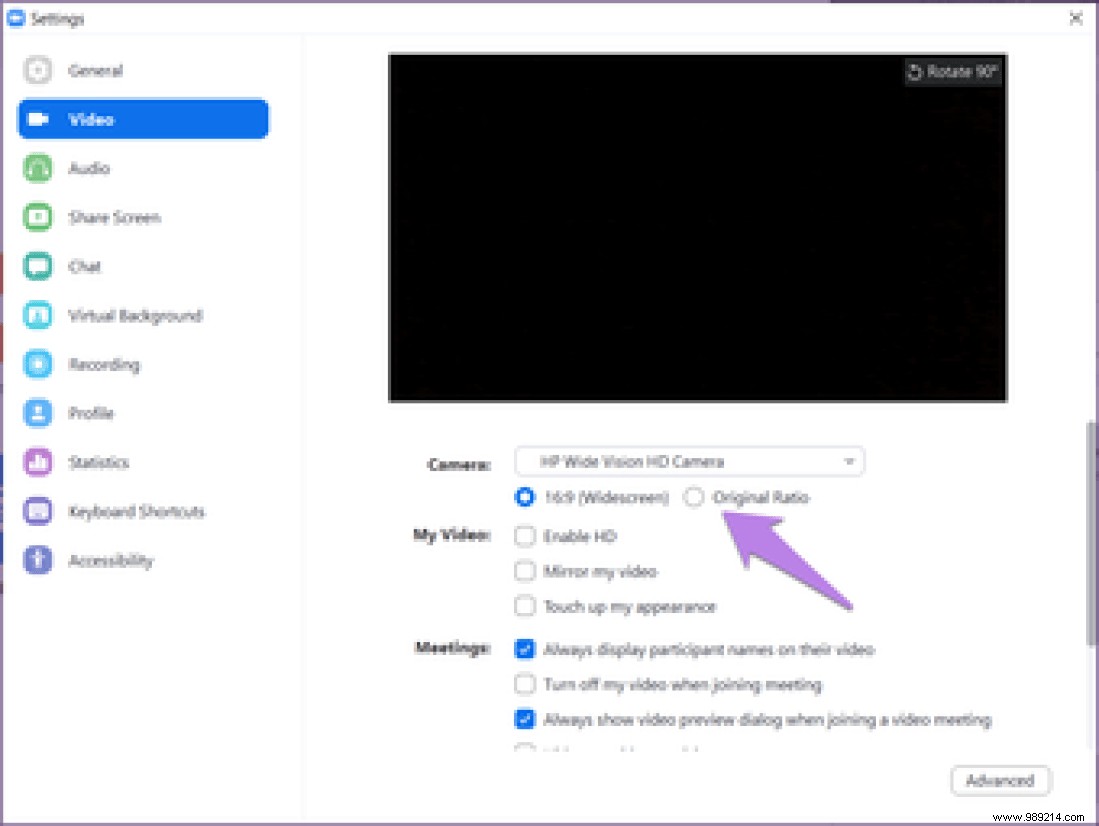
Is your camera showing a bad view of your video? You must have accidentally rotated it, or it may have gotten stuck in tablet mode. To rotate your camera, open Zoom video settings. Click the Rotate option in the video preview screen.
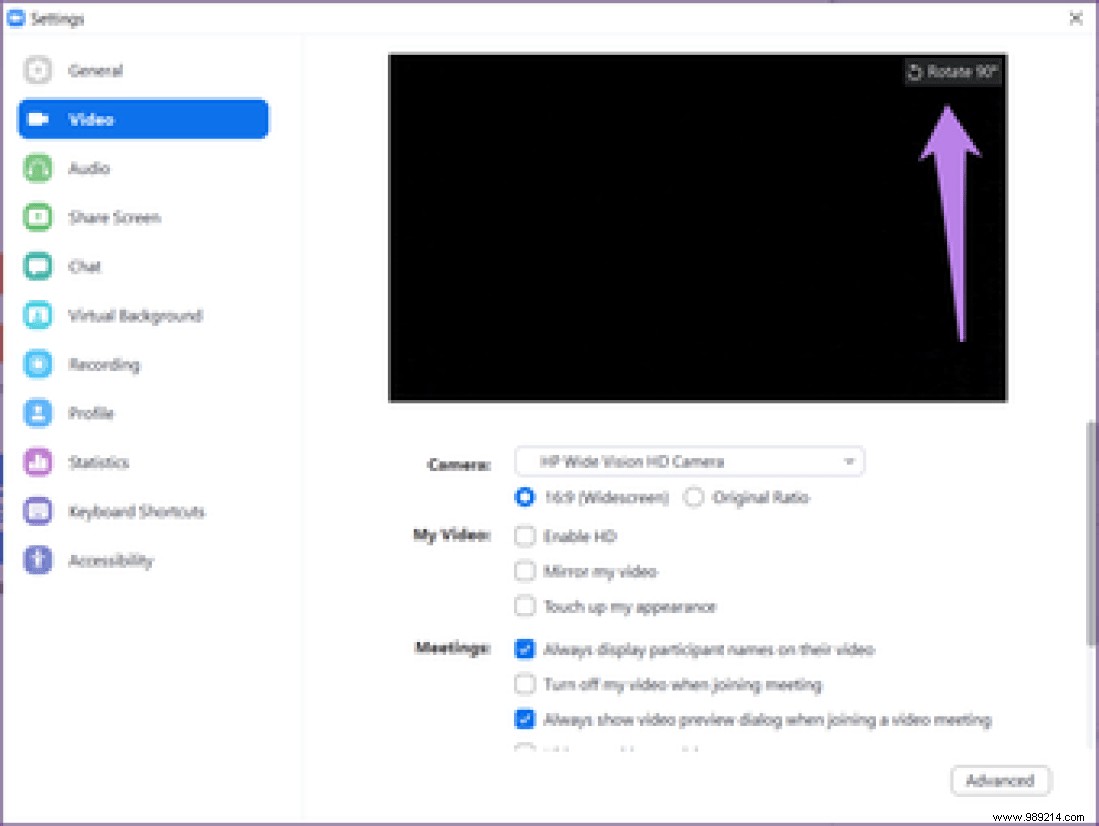
Many of us are concerned about our background when we are on a video call. Fortunately, you can manage this. Choose Zoom's virtual background to make your video stream distinct. You can either choose from the available virtual backgrounds or add your own.
To change your background, go to the zoom settings. Click Virtual Background in the left sidebar. Select a background. Click the add icon to upload from your PC.
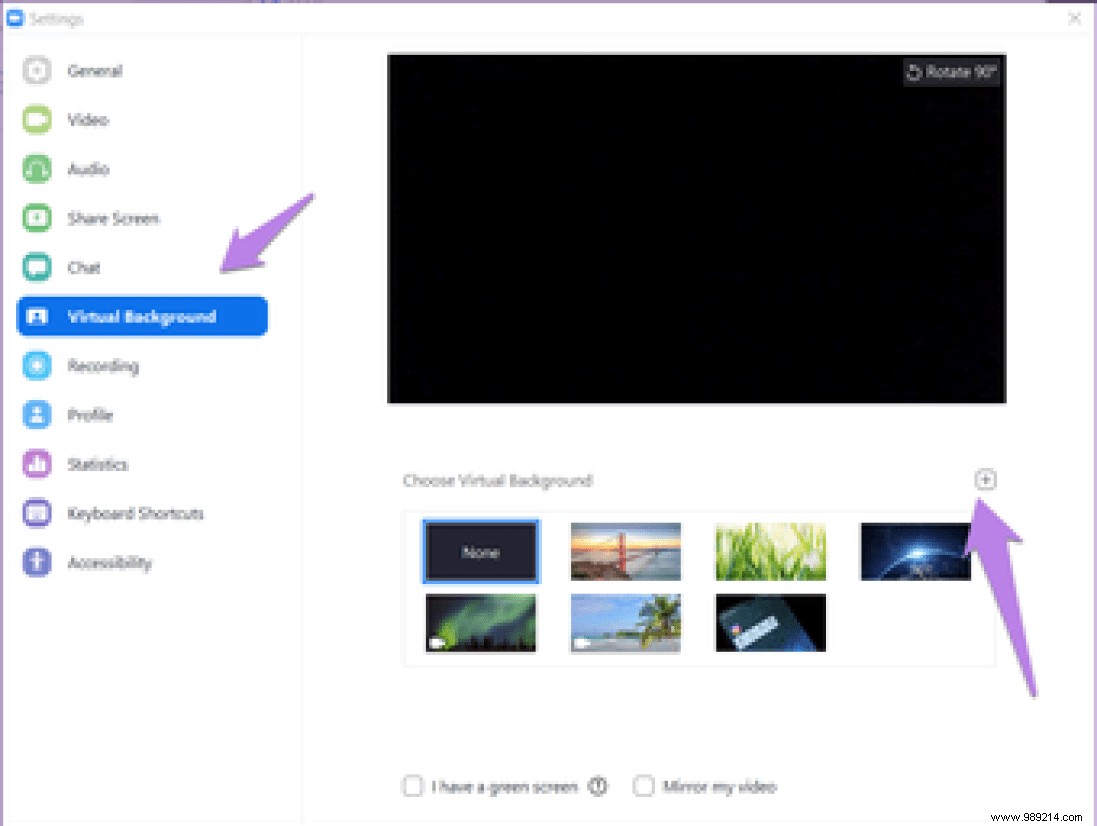
When you're in a meeting, it's likely that someone accidentally walks in or approaches your camera's view. To avoid such moments, you can turn off your camera quickly. To do this, click on the Stop Video option present at the bottom of the meeting screen. Alternatively, right click on your video and select Stop Video.
Pro Tip: Use the shortcut Alt + V (Windows) and Command (⌘) + Shift + V (Mac) to start or stop the video.
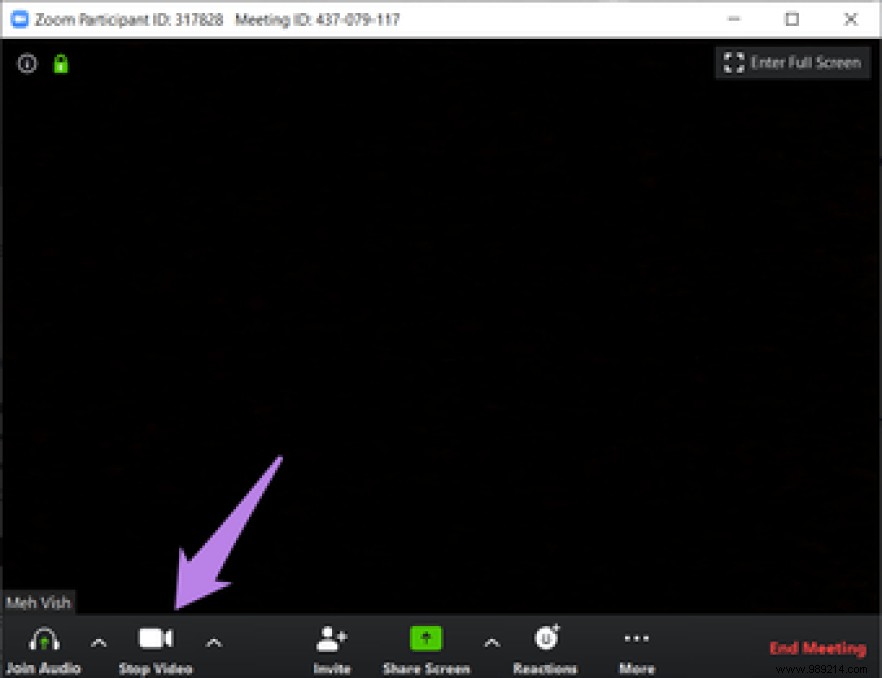
You should use the above setting whenever you want to disable your video. If you want to turn off your video before joining a meeting on Zoom, a setting is available for that. Later, you can also start the video at any time.
To do this, go to the Zoom video settings. Next, check the box next to Mute my video when I join a meeting.
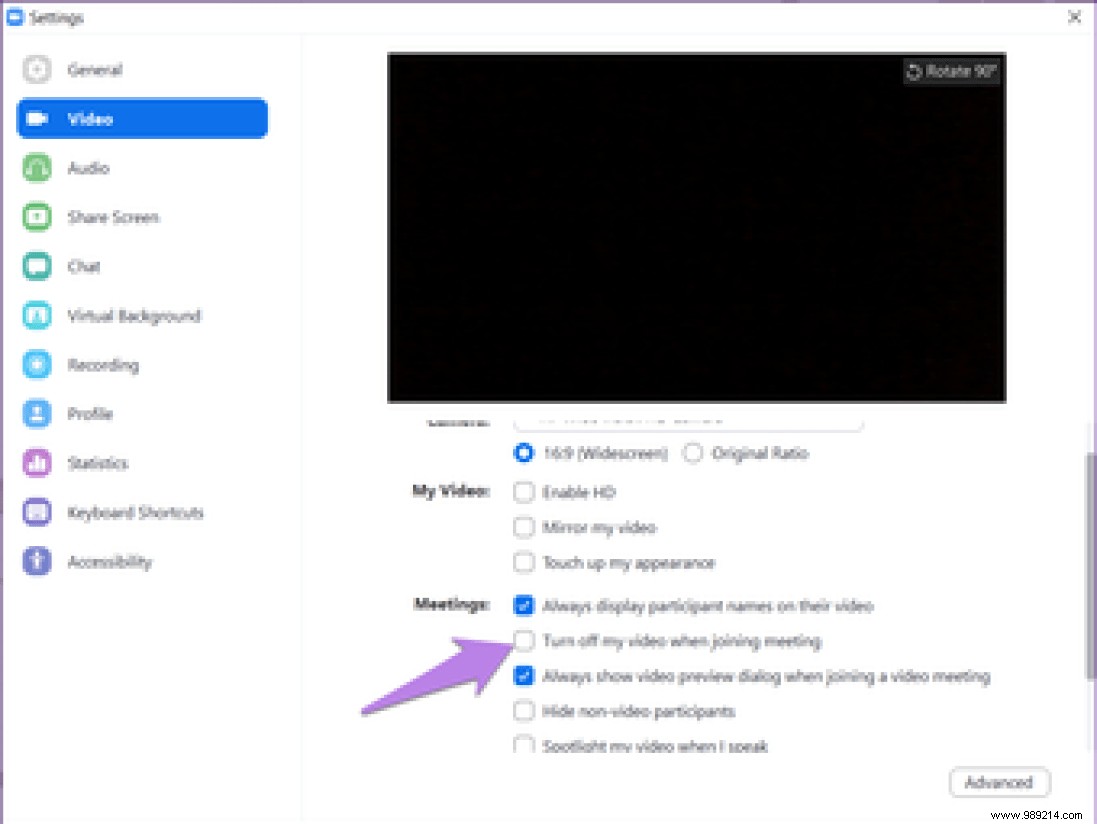
When you're in a meeting, all participants' video is displayed as small tiles. This is called a gallery view. If you think it's distracting, you can change it to only show the speaker's video. To do this, click on the Speaker or Gallery view icon present at the top of the meeting screen.
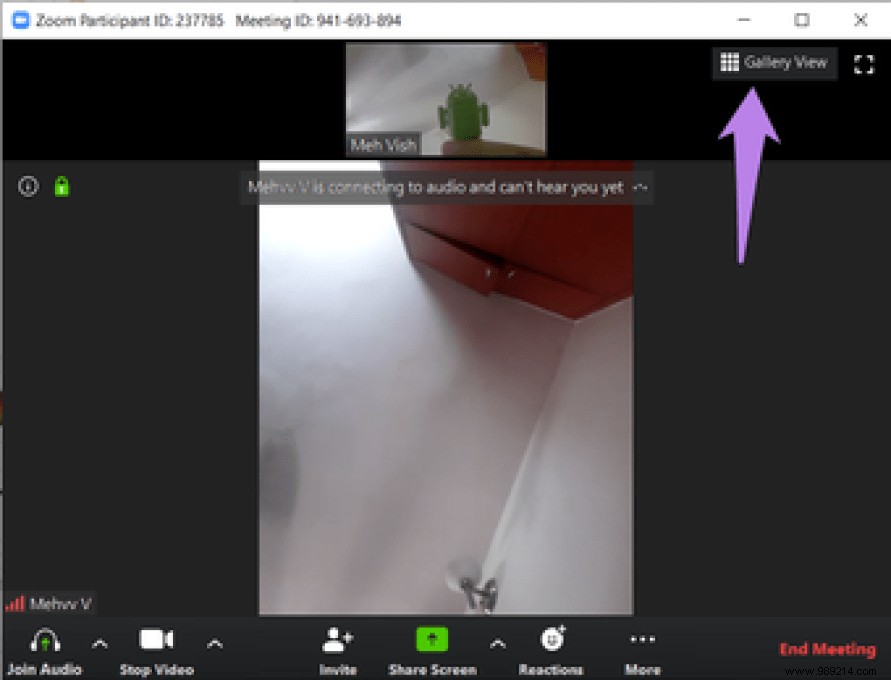
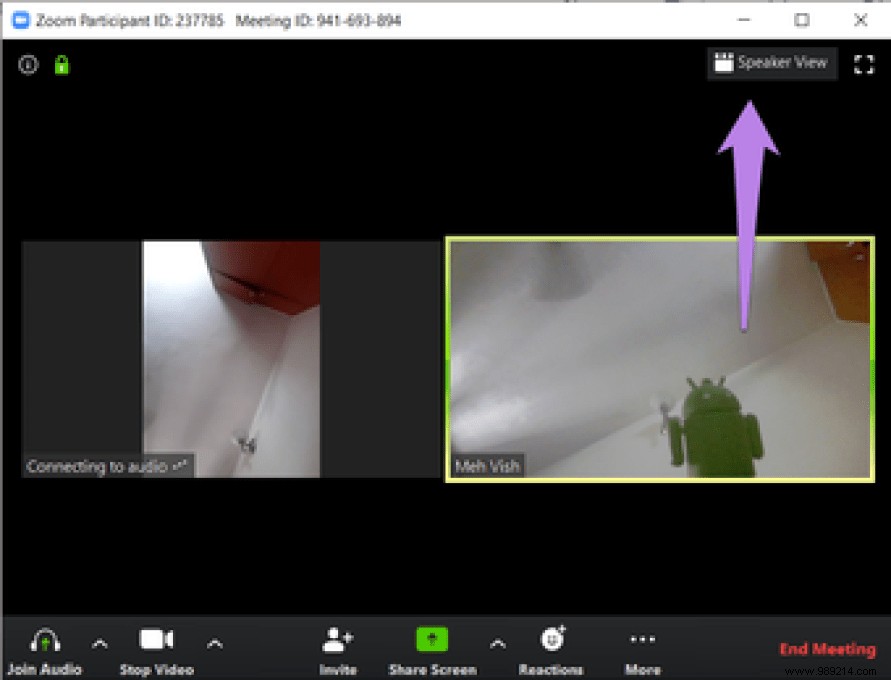
Pro Tip :You can hide participants whose video is not showing by accessing Zoom's video settings. Check Hide non-video participants.
When you're in Gallery View, you can hide your video so it doesn't take up space on your screen. The video will still be visible to others. To do this, right click on your video window and choose Hide Auto Display. To show your video again, click on the Show Self button present at the top.
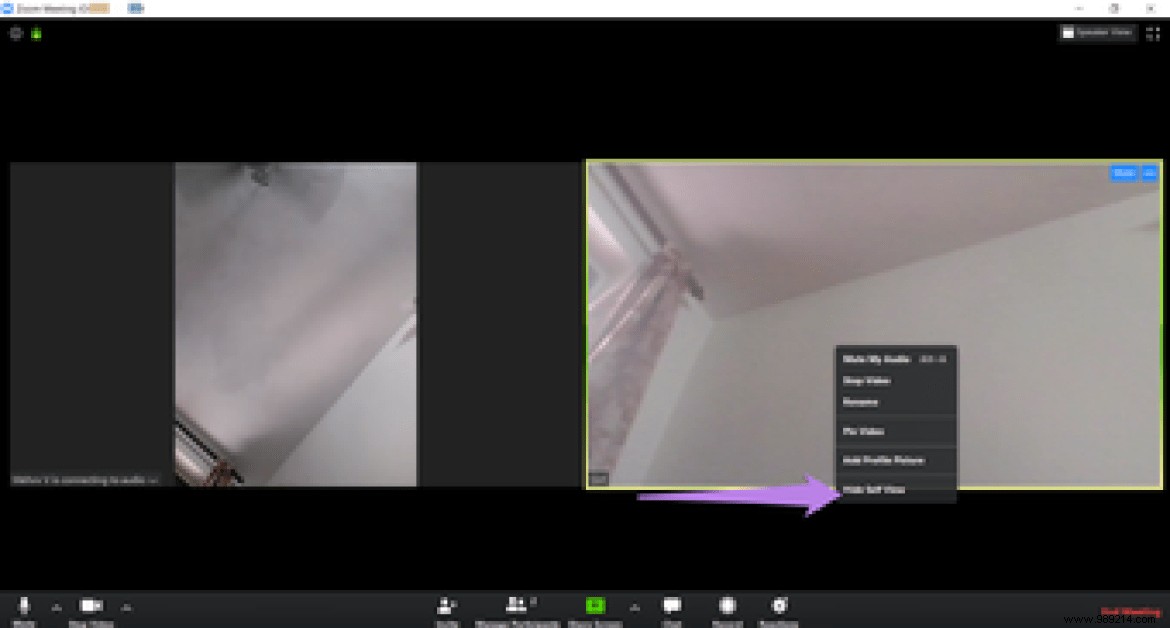
If you're the host of a meeting, you can mute any participant's video. To do this, right-click on the video preview screen and select Stop Video.
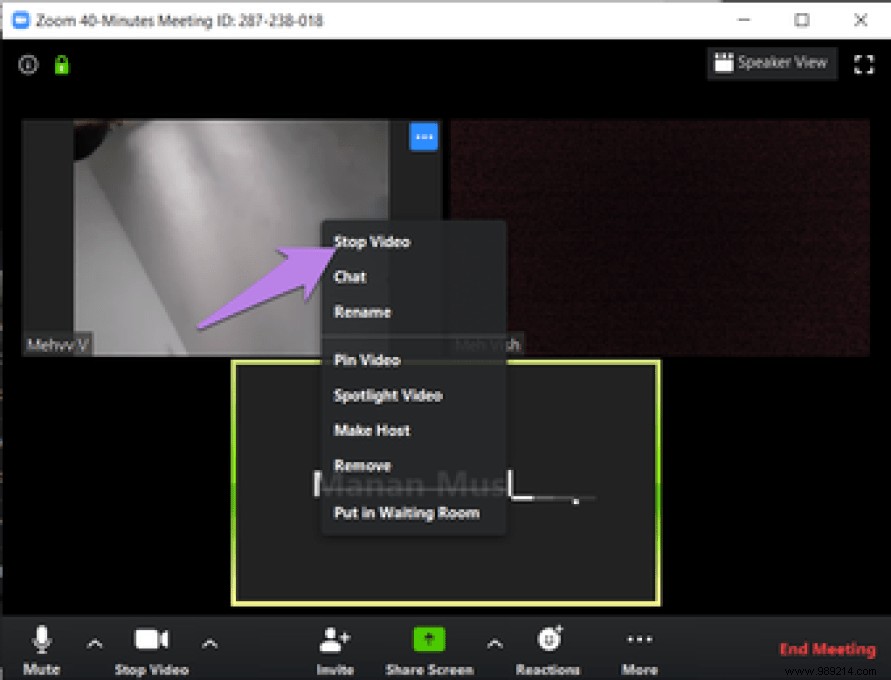
They won't be able to restart the video unless you allow them to. To do this, right-click again and choose the Ask to start video option.
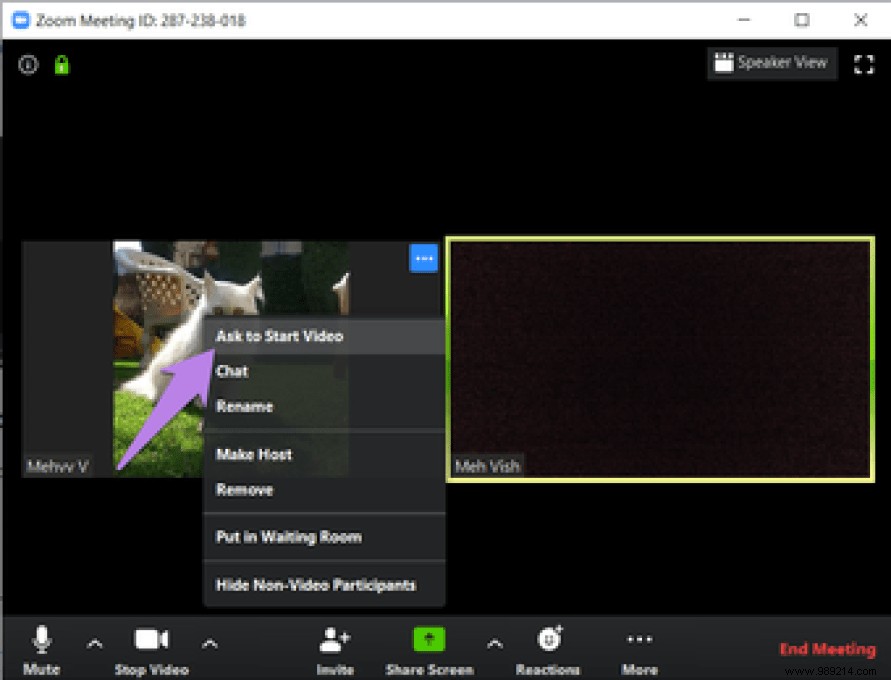
Video plays a vital role in remote meetings. You can improve your work-from-home experience on Zoom by using the tips mentioned in this article. We hope you liked our collection of useful Zoom video settings. Did we miss any? Let us know in the comments below.
Then:
Check out our ultimate guide to Zoom if you want to master this powerful tool. See below.